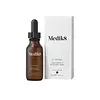What's inside
What's inside
 Key Ingredients
Key Ingredients

 Benefits
Benefits

 Concerns
Concerns

 Ingredients Side-by-side
Ingredients Side-by-side

Water
Skin ConditioningGlycerin
HumectantCoco-Caprylate/Caprate
EmollientPropanediol
SolventDiisooctyl Succinate
EmollientSqualane
EmollientSucrose Polystearate
EmollientPunica Granatum Seed Oil
EmollientCetearyl Alcohol
EmollientAscorbyl Tetraisopalmitate
AntioxidantRosa Canina Fruit Oil
EmollientBenzyl Alcohol
PerfumingHelianthus Annuus Seed Oil
EmollientHylocereus Undatus Fruit Extract
Skin ConditioningXanthan Gum
EmulsifyingGlycogen
HumectantSodium Dehydroacetate
PreservativeHydrolyzed Lupine Protein
Skin ConditioningSodium Hyaluronate
HumectantSodium Stearoyl Glutamate
CleansingHippophae Rhamnoides Oil
EmollientCitric Acid
BufferingOlea Europaea Oil Unsaponifiables
Skin ConditioningMagnesium Ascorbyl Phosphate
AntioxidantDehydroacetic Acid
PreservativeTerminalia Ferdinandiana Fruit Extract
AntioxidantRosmarinus Officinalis Leaf Extract
AntimicrobialParfum
MaskingCitrus Aurantium Amara Flower Extract
RefreshingLinalool
PerfumingLimonene
PerfumingGeraniol
PerfumingBenzoic Acid
MaskingSodium Hydroxide
BufferingWater, Glycerin, Coco-Caprylate/Caprate, Propanediol, Diisooctyl Succinate, Squalane, Sucrose Polystearate, Punica Granatum Seed Oil, Cetearyl Alcohol, Ascorbyl Tetraisopalmitate, Rosa Canina Fruit Oil, Benzyl Alcohol, Helianthus Annuus Seed Oil, Hylocereus Undatus Fruit Extract, Xanthan Gum, Glycogen, Sodium Dehydroacetate, Hydrolyzed Lupine Protein, Sodium Hyaluronate, Sodium Stearoyl Glutamate, Hippophae Rhamnoides Oil, Citric Acid, Olea Europaea Oil Unsaponifiables, Magnesium Ascorbyl Phosphate, Dehydroacetic Acid, Terminalia Ferdinandiana Fruit Extract, Rosmarinus Officinalis Leaf Extract, Parfum, Citrus Aurantium Amara Flower Extract, Linalool, Limonene, Geraniol, Benzoic Acid, Sodium Hydroxide
 Reviews
Reviews

Ingredients Explained
These ingredients are found in both products.
Ingredients higher up in an ingredient list are typically present in a larger amount.
Geraniol is used to add fragrance/parfum to a product. It is the main component of citronellol. It is a monoterpenoid and an alcohol.
Monoterpenes are naturally found in many parts of different plants.
Geraniol can be found in many essential oils including Rose Oil and Citronella Oil. The scent of Geraniol is often described as "rose-like". Many foods also contain Geraniol for fruit flavoring.
Geraniol can irritate the skin when exposed to air. However, irritation depends on the ability of geraniol to penetrate into the skin. In general, geraniol is not able to penetrate skin easily.
Geraniol is colorless and has low water-solubility. However, it is soluble in common organic solvents.
Like citronellol, it is a natural insect repellent.
2,6-Octadien-1-ol, 3,7-dimethyl-, (2E)-
Learn more about GeraniolLimonene is a fragrance that adds scent and taste to a formulation.
It's found in the peel oil of citrus fruits and other plants such as lavender and eucalyptus. The scent of limonene is generally described as "sweet citrus".
Limonene acts as an antioxidant, meaning it helps neutralize free radicals.
When exposed to air, oxidized limonene may sensitize the skin. Because of this, limonene is often avoided by people with sensitive skin.
The term 'fragrance' is not regulated in many countries. In many cases, it is up to the brand to define this term. For instance, many brands choose to label themselves as "fragrance-free" because they are not using synthetic fragrances. However, their products may still contain ingredients such as essential oils that are considered a fragrance.
Learn more about LimoneneLinalool is a fragrance and helps add scent to products. It's derived from common plants such as cinnamon, mint, citrus, and lavender.
Like Limonene, this ingredient oxidizes when exposed to air. Oxidized linalool can cause allergies and skin sensitivity.
This ingredient has a scent that is floral, spicy tropical, and citrus-like.
Learn more about Linalool